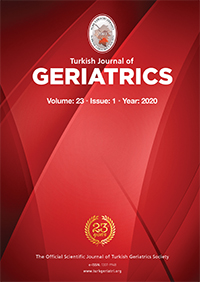Turkish Journal of Geriatrics
2020 , Vol 23, Issue 1
SARCOPENIA: AGAIN AND UPDATED
1Ege University Faculty of Medicine, Dept of Physical Medicine and Rehabilitation, Ä°zmir, Turkey2Hacettepe University Faculty of Medicine, Dept of Physical Medicine and Rehabilitation, Ankara, TURKEY DOI : 10.31086/tjgeri.2020.131 Sarcopenia is defined as, skeletal muscle dysfunction associated with age, chronic diseases, cancer, nutrition problems and physical inactivity. The pathophysiology of sarcopenia seems to involve degeneration of neurogenic, musculogenic, synaptogenic and vasculogenic systems, mitochondrial dysfunction, metabolic factors and inflammatory mechanisms. Early detection of sarcopenia in older adults and patients is important to prevent morbidity, functional decline and death and the diagnosis requires assessment of muscle mass, muscle strength and physical performance. The strongest evidences in the treatment of sarcopenia are probably associated with the positive effects of resistance exercises on muscle strength, muscle mass and physical performance. Also protein intake needs to be increased. Positive results have been reported on supplementation with leucine, ?? hydroxy ??methylbutyrate, Omega 3 and Vitamin D. Antioxidant intake naturally from food is recommended. There are promising studies related to angiotensin receptor blockers, oral anti-diabetic drugs. Interventions to prevent sarcopenia, treatment of the primarily responsible disease, suppression of inflammation, and treatment of metabolic syndromes constitute the basic components of a successful treatment. Keywords : Sarcopenia; Physical Functional Performance; Muscle Strength; Aged

